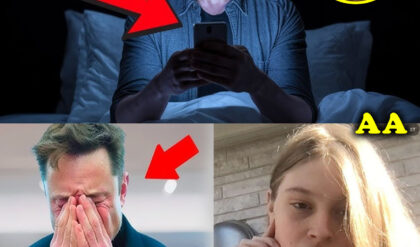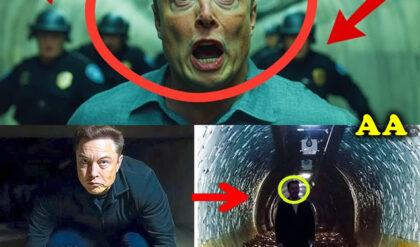3 Shocking Facts About Jesus Face Nobody Knows
.
.
.

For centuries, the Shroud of Turin has been a symbol of wonder, mystery, and faith. Preserved in the chapel of Turin, this ancient piece of cloth has been revered as a possible relic of Jesus Christ, believed by many to be the burial shroud used after His crucifixion. While some see it as a powerful testament to Christ’s life, death, and resurrection, others have viewed it with skepticism. However, recent scientific breakthroughs have reignited the debate, leaving believers and researchers astounded.
The Origins of the Shroud
The Shroud of Turin first emerged in historical records in the 1300s, owned by a knight named Geoffrey de Charny. It survived fires and clumsy repair attempts, eventually finding a home in the Turin chapel in the 17th century. What makes this cloth extraordinary is the faint image of a man imprinted on its surface—a man with crossed arms and closed eyes. This figure has been identified by many as Jesus Christ, as it closely resembles traditional depictions of Him.
The Bible does not explicitly mention the Shroud, but it does describe Jesus being wrapped in a burial cloth provided by Nicodemus and Joseph of Arimathea. Both men were wealthy members of the Sanhedrin, making it plausible that the Shroud could be this very cloth. Over the centuries, the Shroud changed hands, eventually being entrusted to the Catholic Church for safekeeping, where it remains a sacred artifact to this day.
In 1898, the Shroud caught the attention of a photographer named Secondo Pia. When he developed the negatives of his photographs, he was stunned to see a clear and distinct image of a man—a revelation that captured global attention. The image appeared to be that of Christ, as depicted in countless artistic portrayals. This discovery transformed the Shroud from a forgotten relic into a subject of international fascination and study.
The Shroud Under Scrutiny
By the 1970s, skepticism around the Shroud prompted the formation of the Shroud of Turin Research Project (STURP), a team of scientists tasked with investigating its authenticity. Their findings were nothing short of extraordinary. Imaging technology revealed that the faint outline on the Shroud was not painted or forged but was an actual imprint of a man who had been scourged and crucified.
Despite this discovery, many remained unconvinced. In 1988, three labs in Arizona, Switzerland, and Oxford conducted radiocarbon dating tests. Their results suggested the Shroud was much younger than its purported 2,000-year history, dating it to the Middle Ages. However, the credibility of these results was later questioned, as the data was incomplete and did not account for the imprint’s mysterious origin. This left the question of authenticity unresolved.
In recent years, advancements in technology have reopened the investigation. A team of five Italian scientists employed a cutting-edge method called Wide-Angle X-Ray Scattering to analyze the Shroud’s linen. This innovative approach examined the natural aging of cellulose fibers within the cloth. Their results were groundbreaking: the Shroud was dated to between 55 and 58 AD, aligning perfectly with the time of Christ. This method, distinct from carbon dating, provided a fresh perspective and reignited global interest in the Shroud.
The scientists also subjected the cloth to a thermal shock test, exposing it to intense heat to determine how such a delicate fabric could survive extreme conditions. Their findings confirmed the durability of the Shroud and the uniqueness of the image. The imprint, they concluded, required a staggering 6.4 gigawatts of energy to be created—an amount far beyond human capability. This has led many to believe the image could only have been formed through a miraculous event, such as Christ’s resurrection.
The Face of Jesus
One of the most remarkable developments has been the use of artificial intelligence to reconstruct the face on the Shroud. AI models, like MidJourney, analyzed the image to create a more accurate depiction of the man imprinted on the cloth. The results revealed a figure with long hair, a beard, and severe wounds consistent with the crucifixion. The resemblance to traditional images of Jesus was striking, leaving many convinced that this was indeed the face of Christ.
For believers, this discovery is a powerful testament to their faith. The Shroud, once dismissed as a medieval forgery, now stands as compelling evidence of Christ’s existence, crucifixion, and resurrection. For skeptics, it challenges long-held doubts and invites further exploration into the mysteries of the divine.
While the Shroud’s authenticity is an ongoing debate, its significance transcends the physical. The cloth serves as a reminder of Christ’s sacrifice and the hope of eternal life. It inspires Christians to reflect on their faith, reminding them of Jesus’ words to Thomas: “Blessed are those who have not seen and yet have believed.”
The Shroud also highlights the intersection of faith and science. Despite the challenges of proving divine phenomena, the persistent efforts of researchers demonstrate humanity’s unyielding desire to understand the mysteries of existence. For Christians, the Shroud is a symbol of God’s love—a physical manifestation of the profound truth that Christ died and rose again for the salvation of humanity.
Faith Beyond Evidence
In the end, the Shroud of Turin reminds us that faith is not rooted in physical objects but in the love and grace of God. While scientific discoveries can strengthen belief, true faith transcends evidence. It is a relationship with a God who came to Earth, suffered, and conquered death to offer humanity eternal life.
As Christians around the world celebrate the Shroud’s revelations, they are reminded of the greater truth it represents: that Christ is alive, reigning as King of Kings and Lord of Lords. This sacred cloth, whether authentic or not, serves as a call to live in gratitude for the sacrifice made on the cross and to trust in the hope of the resurrection.
In the words of Billy Graham, “God proved His love on the cross. When Christ hung, bled, and died, it was God saying to the world, ‘I love you.’” The Shroud of Turin, an artifact shrouded in mystery and faith, continues to inspire believers to look beyond the tangible and place their trust in the eternal.
SEE MORE: Finding God in the wildfires

Victims of the Palisades Fire hug during a special Mass for the burned-down Corpus Christi Church at St. Monica in Santa Monica on Jan. 12. (Victor Alemán)
My heart is heavy for all of you who are suffering because of the wildfires that are still burning in the mountains and along the sea. These days are a trial for our great city and for the family of God here in the Archdiocese of Los Angeles.
As the firestorm first hit, I offered a series of Masses to pray for you and our neighbors and for the brave men and women working to put these fires out and keep us safe.
It was an emotional experience for me to meet those of you who have lost so much: loved ones and homes, businesses and livelihoods; parishes, schools, and neighborhoods. It makes me deeply sad to see thousands of LA Catholics and other Angelenos living like refugees and displaced persons in their own hometowns.
We are just beginning to understand the magnitude of the destruction and disruption. These fires have reduced people’s worldly possessions and their most precious memories to ashes and left their futures uncertain. Officials say it may take years to rebuild and that many of our communities may never look the same.
In times like this, it’s understandable that we might question God’s love for us, to wonder where he is while good people are suffering. Why does God allow evil? Why does he allow natural disasters like wildfires and hurricanes, earthquakes, and floods?
There are no easy answers. But that does not mean that there are no answers.
Jesus taught us that God is our Father and that he holds all creation in his loving hands. He promised that not a single sparrow falls from the sky without our Father knowing. Then he reminded us: You are worth so much more than any sparrow.
You are precious to God, each of you. You are so precious to God that he sent his only Son into the world to die on the cross for you. We need to cling to this truth when hardships and sufferings come.
Jesus knows our hopes and dreams and struggles. He is near to us in our joys and in our sorrows.
He has only one will for our lives: that we grow in holiness and love and become saints who share his love here on earth and live forever with him in heaven. Everything that happens, everything he allows, comes from his love for us and his desire for our salvation.
This is not an easy answer, but it is the truth.
The saints teach that while God himself cannot suffer, he does suffer with us.
This is the beautiful truth of the cross. By dying and rising from the dead, Jesus showed us that God can bring good out of even the greatest evil.
And because Jesus conquered death, our own sufferings can find meaning and purpose when we join them with his.
Every crisis is a crossroads. And in every crisis we have a decision to make.
We can respond with anger and despair, and that’s a natural temptation.
Or we can decide to accept our sufferings as somehow sharing in the sufferings of Jesus, who suffers for us and with us and who will never abandon us no matter how dark the path may seem.
Even when we have been left with little, we still have love to give.
We can “offer up” our sufferings in a spirit of love and sacrifice for our neighbors. We can make a gift of our lives to suffer alongside others, supporting them in their struggles.
Again, the saints teach us that the sacrifices we make for others can bear fruits of love and compassion when we unite ourselves to Jesus’ sufferings. In a mysterious way, what we offer in love becomes part of the great treasury of compassion that flows from his sufferings on the cross.
Already in this firestorm, we see the Lord raising up heroic witnesses.
I’m thinking of the family down on their knees in the place where their home once stood, giving thanks to God and Our Lady for sparing them; the parishioners who risked their lives to put out the fire on the church roof; and the firefighters who rescued the tabernacle from a burning church.
We will hear more stories like this in the days ahead. There will be many more sacrifices of love that we will never hear of, all the hidden offerings of parents for their children, all the little unseen acts of kindness in our homes and communities.
Let’s keep helping and supporting one another, let’s keep working together so that our neighbors will know the truth of God’s love in this hour of devastation and loss.
Pray for me, and I will pray for you.
And let us ask Our Blessed Mother to protect and guide us.
Our Lady, Queen of Angels: Be a mother to us all!






